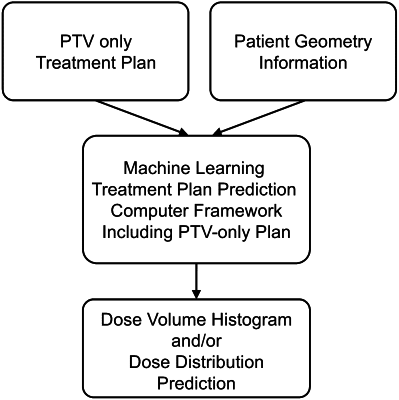| CPC A61N 5/1031 (2013.01) [G06F 17/18 (2013.01); G06N 20/10 (2019.01)] | 1 Claim |

|
1. A treatment planning prediction method, comprising:
(a) training a machine deep learning algorithm operable by a computer wherein the machine deep learning algorithm is trained to correlate (i) Dose-Volume Histograms (DVHs) or Dose Distributions (DDs) from Planning Target Volume (PTV) only treatment plans with (ii) DVHs and DDs of treatment plans for patients, wherein the PTV only treatment plans are defined as treatment plans where dose constraints to Organs-At-Risk (OARs) have been removed and have PTV constrains defined for dose homogeneity and dose conformity;
(b) the computer receiving dosimetric parameters, defined as DVHs or DDs from a PTV only treatment plan for a new patient, and the computer inputting the dosimetric parameters into the machine deep learning algorithm;
(c) the computer processing the inputted dosimetric parameters by the machine deep learning algorithm; and
(d) the computer generating an output from the machine deep learning algorithm, wherein the output are DVHs or DDs for the new patient, wherein the output is characterized by containing OARs constraints for the new patient as well as PTV constrains defined for dose homogeneity and dose conformity for the PTV only treatment plan for the new patient.
|